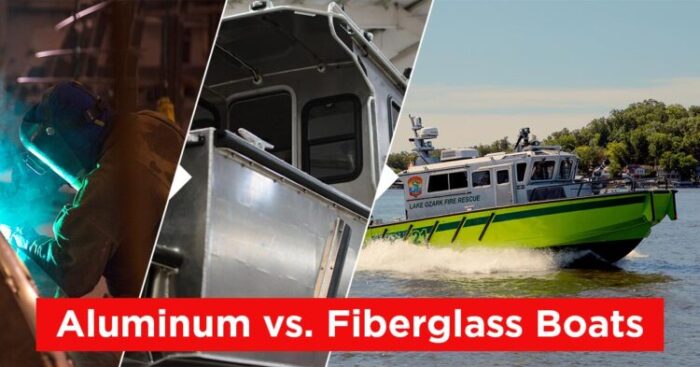Whether shopping for a bass boat to run fully-rigged across inland lakes or a salty cruiser to escape to ocean adventures, prospective skippers face a critical materials decision—aluminium vs fiberglass Boats hull construction. Both platforms promise years of loyal service but in different ways. This guide examines the key performance, durability, and maintenance factors separating two of boating’s most enduring materials.
Speed & Power
Fiberglass boats deliver a clear edge for velocity and precision handling thanks to their fine-tuned contours and glossy gelcoat reducing friction and turbulence. State-of-the-art resin blends also enable thinner, lighter, yet stronger laminates capable of matching high-output power with elevated top speeds. Aluminum equivalents run faster than decades ago but still cut through rough water less nimbly at pace compared to finely honed fiberglass models. When blazing trails to distant hot spots or chasing the checkered flag matters most, smooth-riding fiberglass grades ahead.
Stability
However for small-water stability essential to safely walking gunwales while landing buckets or cutting bait, aluminum punches back thanks to its exceptional strength-to-weight durability. Naturally non-porous metals won’t ever soak up moisture causing wood or weaker materials to soften and flex over bumps at speed. Unflinching flat or shallow-V pressed aluminum hull panels stay rigid in chop without deflection that upsets footing or balance in fiberglass decks. For unwavering stability at slower speeds to keep anglers and passengers confidently surefooted, aluminum retains trustworthiness.
Seaworthiness
Fiberglass garners high marks for graceful handling and a drier ride when crossing swells off the coast. Epoxy resin coatings also resist UV fading and yellowing better than paints and clear coats protecting aluminum exteriors. Toward rocky or hostile environments with lots of flotsam where inevitable collisions remain likely, “fiber” boats bounce back from small scrapes and surface scratches more easily before needed repairs. But for extensive crunching into rough ramps, hidden flats, or other waterborne hazards uncharted in remote destinations, aluminum’s unrivaled strength withstands repeated abuse. Different materials simply distribute damage differently across equally harsh conditions.
Maintenance Requirements
Boat upkeep also varies between the two platforms. Although jumping back in the water quickly after cleaning proves easier with just hose-and-go aluminum exteriors, expanded maintenance comes due going unnoticed underneath over years of use. Salts, slime, and sediment seeping into tiny crevices between joins or welds slowly degrades the integrity that keeps lower hulls rigid and afloat. Fiberglass means diligently compound-buffing and resealing the clear outer barrier annually, but sealed inner liners keep soaking corrosives mostly outside the hull if gouges remain shallow. Either choice demands proper care to keep pitting and deterioration at bay.
Costs & Resale Value
Fiberglass commands premium upfront pricing given greater complexity melding million-year-old materials into cutting-edge aquatic machinery. Yet complex curves capable of precision cuts pay off for skilled skippers able to fully harness performance edges. Exceptional seaworthiness also makes fiberglass vessels highly desirable in coastal markets, yielding higher used sales values that offset initial investments during ownership cycles. New aluminum boats shine for bargain pricing plus included accessories and options that narrow gaps in fishing features. They may not generate equitable resale interest outside niche midwestern walleye lakes for example. But low acquisition costs soften the blow when moving down eventually to next-generation models. Both materials retain solid rationale that balances priorities and budget differently.
Conclusion
New innovations continually raise performance bars for both aluminum and fiberglass boats occupying critical roles in the boating spectrum. As manufacturing techniques improve annually, biases and compromises between the two leading materials keep fading. Yet varying performance attributes, handling characteristics, long-term durability, and costs still cater to certain priorities over others. Rather than declaring definitive winners or losers, wise boaters simply decide where individually ranked advantages lie before committing fully to aluminum or fiberglass hull to fulfill their aquatic aspirations. I hope this Aluminium Vs Fiberglass Boats post helps you.

